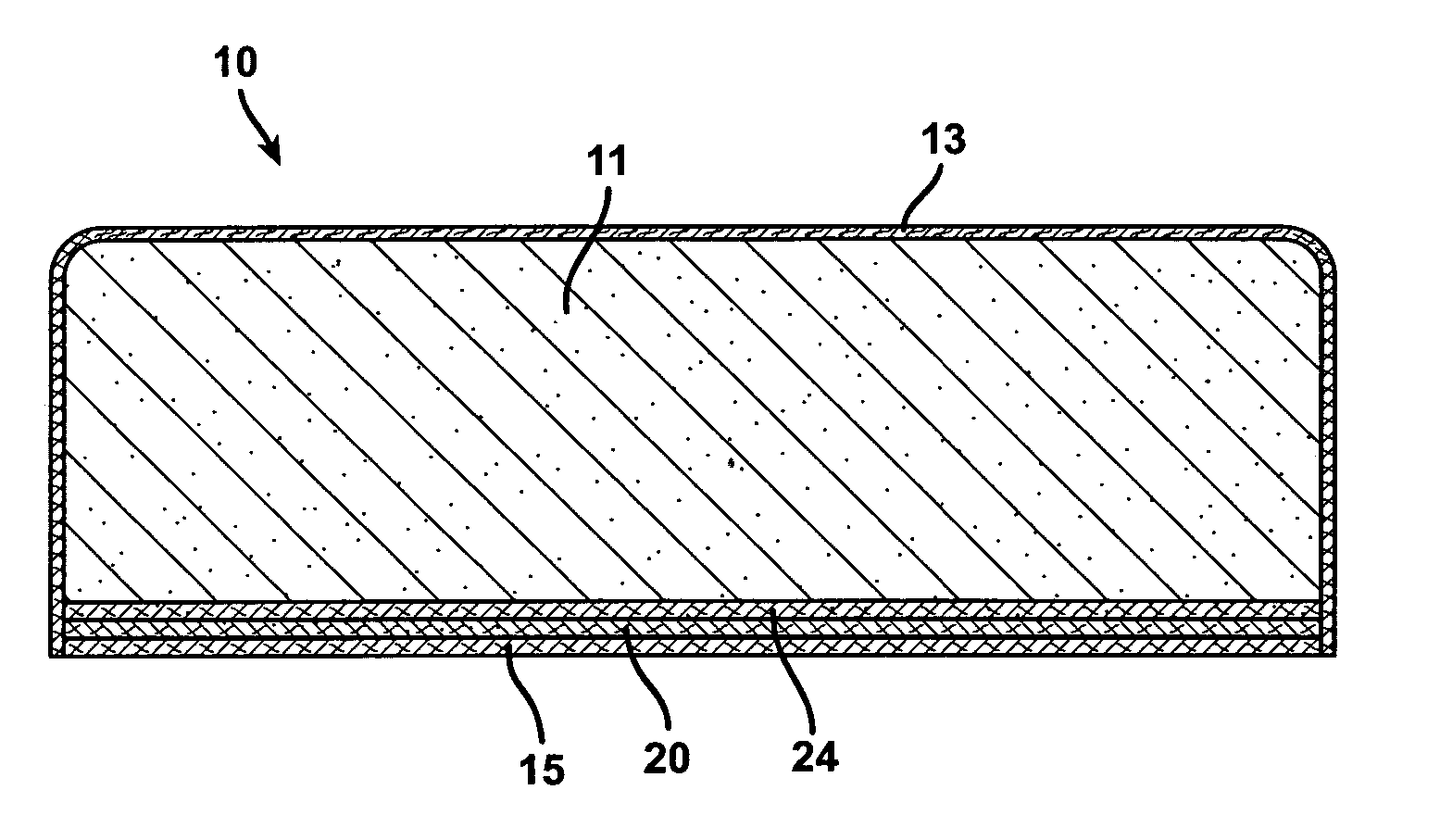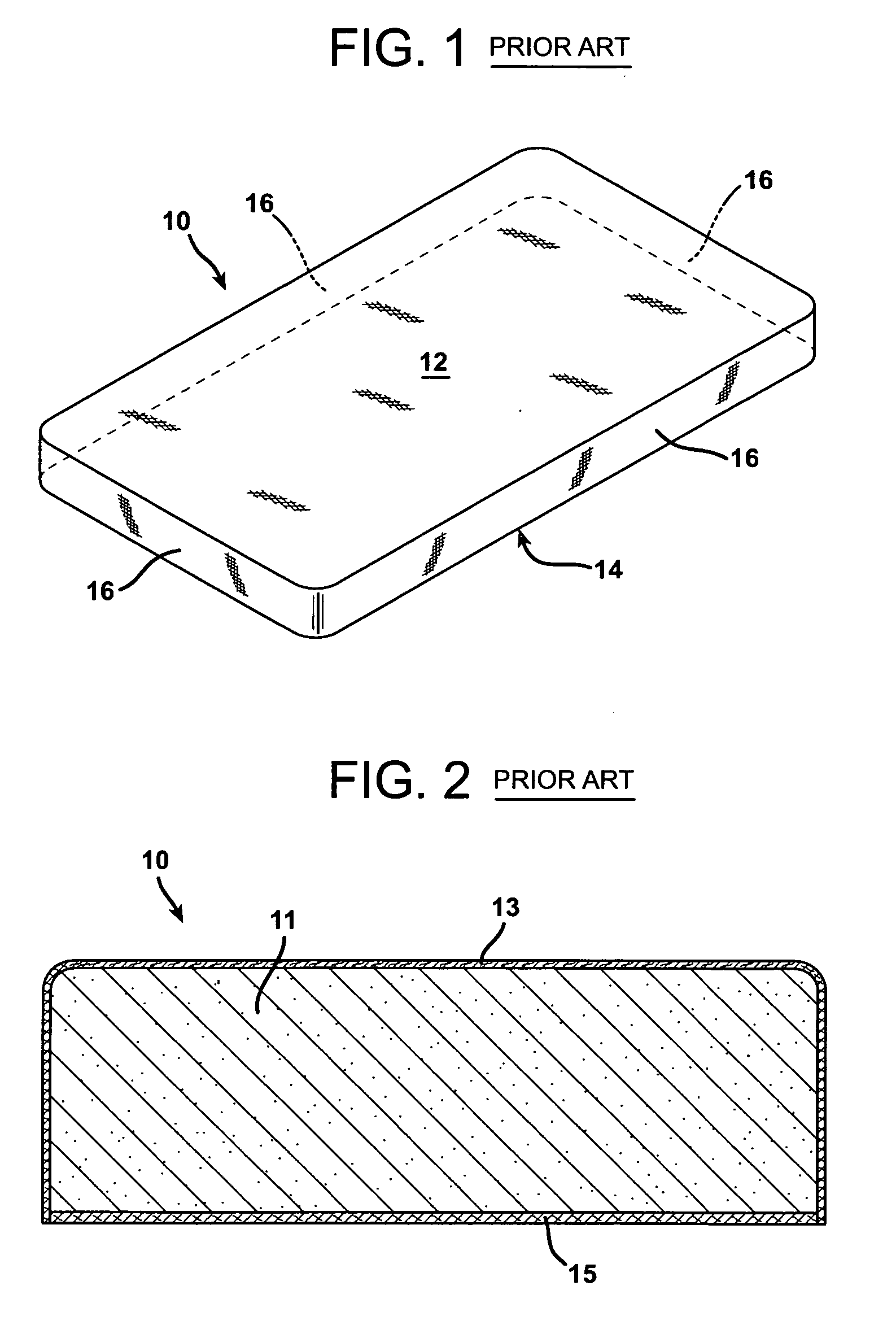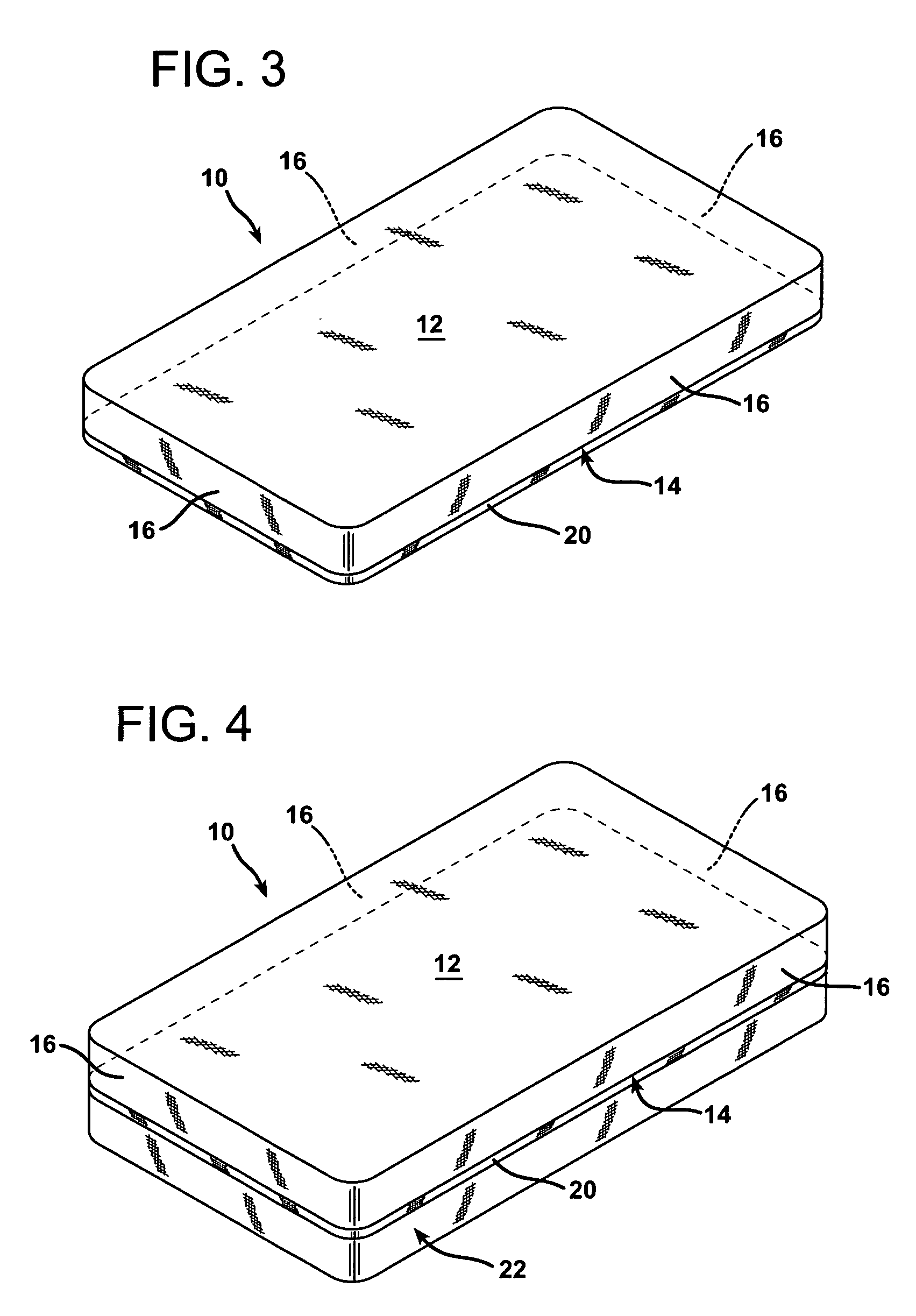Fiberglass products for reducing the flammability of mattresses
a technology of fiberglass and mattresses, applied in the field of fiberglass products, can solve the problems of high volatile filling materials, many individuals have been severely injured or died, and add gaps and crevasses, so as to reduce the flammability of mattresses, maintain the comfort level of traditional mattresses, and be inexpensive to manufactur
- Summary
- Abstract
- Description
- Claims
- Application Information
AI Technical Summary
Benefits of technology
Problems solved by technology
Method used
Image
Examples
examples 1-3
Testing Protocol
[0081] The following Examples 1-3 each followed the testing protocol set forth herein. A 12 inch by 12 inch sample of the product to be tested was positioned on a metal frame and held in place on three sides. A weight (approximately 1-2 pounds) was hung from the bottom of the sample to simulate the pull that would be exerted on the sample if it were contained in a mattress. A T-shaped burner head was positioned approximately 300 mm (1 foot) from the side of the sample. The flow rate of the propane gas through the burner was approximately 6.6 L / min. During testing, burner was permitted to burn for 50 seconds. An infrared gun was used to measure the temperature of the back of the sample. A measurement was taken every second from the ignition of the burner until the burner was turned off (i.e., 50 seconds).
example 1
[0082] A veil composed of aramid, glass, and polyester fibers (diamond line), a veil composed of aramid, glass, polyester, and PVAC (square line), and a veil composed of melamine, glass, polyester, and PVAC (triangle line) were tested according to the procedure set forth above. A temperature of approximately 800° F. is the temperature at which the flame is considered to have burned through the sample. The graph set forth in FIG. 8 shows that only the melamine, glass, polyester blend veil reached a temperature sufficient to burn through the veil. The veil composed of aramid, glass, and polyester fibers and the veil composed of aramid, glass, polyester, and PVAC passed the burn-through test.
example 2
[0083] Veils formed of an aramid / PVC fiber blend (square line and “X” line), a melamine / PVC fiber blend (triangle line), a glass / PVC fiber blend (diamond line) were tested for burn through according to the procedure set forth above. As shown in FIG. 9, the veil formed of the melamine / PVC fibers burned through in approximately 20 seconds and was considered to have failed the test. The aramid / PVC fiber blend and glass / PVC fiber blend mats did not burn through and were therefore considered to be successful.
PUM
| Property | Measurement | Unit |
|---|---|---|
| glass transition temperature | aaaaa | aaaaa |
| length | aaaaa | aaaaa |
| length | aaaaa | aaaaa |
Abstract
Description
Claims
Application Information
 Login to View More
Login to View More - R&D
- Intellectual Property
- Life Sciences
- Materials
- Tech Scout
- Unparalleled Data Quality
- Higher Quality Content
- 60% Fewer Hallucinations
Browse by: Latest US Patents, China's latest patents, Technical Efficacy Thesaurus, Application Domain, Technology Topic, Popular Technical Reports.
© 2025 PatSnap. All rights reserved.Legal|Privacy policy|Modern Slavery Act Transparency Statement|Sitemap|About US| Contact US: help@patsnap.com



